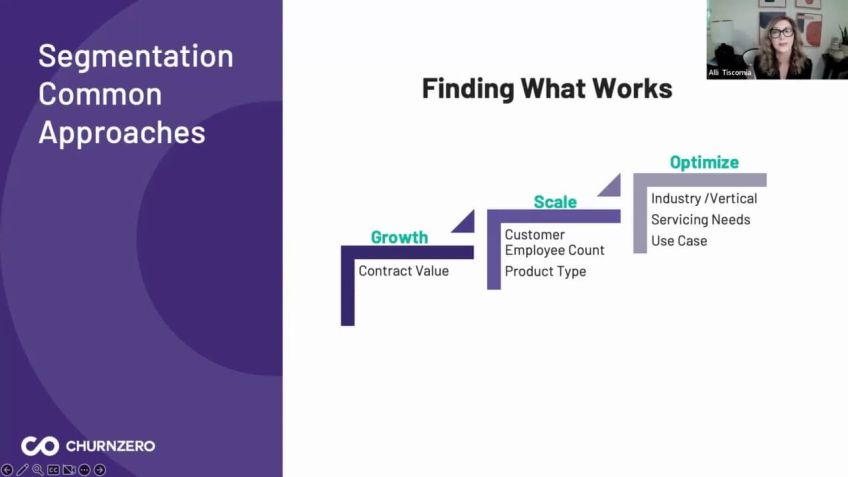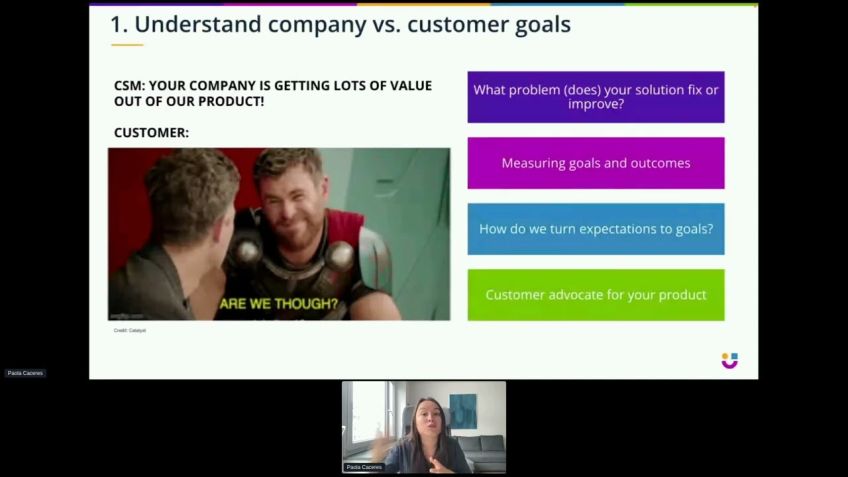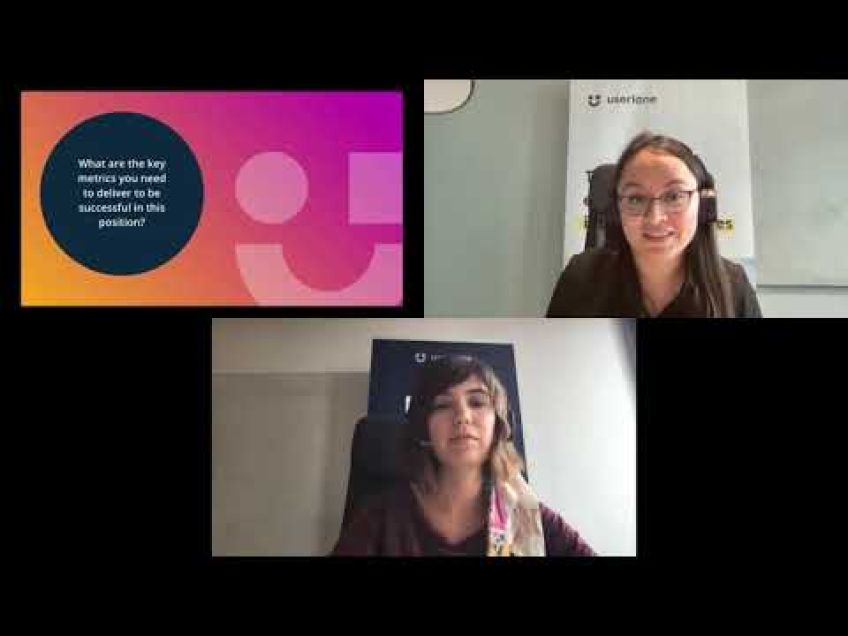Developing an optimal strategy for customer engagement and success at scale by Chitra Madhwacharyula
Reviews
Developing an Optimal Strategy for Scaling the Customer Success Function
Hello there! Today's discussion delves into an engaging and crucial topic: The Role of a Customer Success Center of Excellence in Scaling your Organization. This is a broad topic - so consider this article a high-level introduction to guide your strategy as your organization scales.
Understanding Customer Success
Customer Success or CS is gaining traction in many companies, marking its importance as a key factor in adoption, expansion, and growth. The ultimate goal is to make your customers successful, as fulfilled customers are more likely to stay with you and expand over time.
The Customer Success Maturity Model: Scaling Your Organization
Scaling the customer success function often starts with ad-hoc and aware models, gradually moving into a more regularized, repeatable pattern. Scaling involves an evolving focus as you move from initially being a point of contact for customers to building a more strategic relationship focused on value realization.
A typical growing pain for companies is in determining how to grow and retain their customers. There's no single solution - but a holistic customer-driven approach goes a long way in achieving this.
Scaling Your Customer Success Function: Key Considerations
- Standardization and Repetition: Defining customer journey maps, playbooks, workflows that can be standardized, and repeated across your CS functions.
- Efficient Operations: Focus on analytics, metrics, and measurement to optimize processing and delivery.
- Scope of Responsibilities: Determining what responsibilities your CS will undertake exactly.
- Stakeholder Buy-in: Aligning your scaling and optimization strategy with your stakeholders ensures its success.
Building a Customer Success Center of Excellence
Building a robust Customer Success Center of Excellence (CS CoE) for your organization begins by focusing on CS business operations. The CS CoE designs a scalable, repeatable customer success model to maximize value delivery to the customers. Establishing the vision, mission, and charter of your CS CoE is an excellent starting point.
Customer Success CoE Structure
A standard Customer Success CoE structure consists of core and extended functions that cater to standardizing workflows, adopting tools and analytics, and increasing account coverage. These core functions provide justification for your budget and directly contribute to operational standardization and efficiency.
Sub-functions within CS CoE
- Design and Standardizing: This sub-function is responsible for defining and scaling the CS operational model.
- Operational Tools: Deploying the right tools to facilitate the implementation of the CS operational model.
- Adoption Managers: Ensuring that the deployed processes and tools are adopted as planned by the CS community.
- Community Managers: Exciting and aligning the CS community with what your organization is trying to achieve.
The underlying theme when dealing with standardization and scaling is simplification. Simplicity ensures success in your adoption and scaling initiatives.
The Importance of Data
Data is an intrinsic friend in your journey to develop an optimal strategy for scaling the customer success function. The efficiency, predictability, and uniform customer experience offered by your CS CoE are driven by a strong data-centric model. Initiatives such as customer segmentation projects, NRRARR forecasting tools, and CS resource planning can be strongly driven by your CS CoE team, contributing significantly to the long-term success and scale of your CS organization.
The Essence of CS CoE and Scaling
The ultimate goal of establishing a customer success center of excellence (CS CoE) is to transition your CS function from a reactive to a proactive state at scale. By focusing on efficiencies and scale in your customer success strategy, you can lay the correct foundations and fast track the success and value of your CS function. Only then will you be set to write the next chapter in the customer success scaling story.
Need tailored advice? Reach out on LinkedIn
If you have questions or if you need tailored advice, feel free to connect with us on LinkedIn. We are happy to further discuss your organization's specific needs and suggest the leading and successful practices surrounding customer success scaling and efficiencies.
Happy Scaling!
Video Transcription
Hi, everyone. Um Thank you for your interest in this session. Uh Like I said, my name is Chitra Madhvacharya and I head the Worldwide Center of Excellence at uh H Pe Green Lake.And today I'm going to be talking about how to develop an optimal strategy for scaling the customer success function within your organization. This is actually a pretty sizable topic about which uh honestly, books can be written. So it's hard to go into any great depth in 20 minutes.
So treat this session as a high level introduction to get you started in the right direction as you start thinking about your own organizational scaling mechanisms. Um So as customer success or CS, as I will also be referring um to it during the course of this presentation becomes more prevalent in companies. And with CS now being recognized as a key differentiator for adoption, expansion and growth by many of these companies, it sets the stage for the next logical step in the customer success maturity model. And that is how do you effectively scale this organization and that's what we are going to be exploring today. But before we dive into the details Uh And I just switched the slides. So hopefully, I think you uh you can see it. Let's take a step back and uh get aligned on the baseline of what is customer success. So put simply customer success is a combination of customer outcomes and customer experience and the rationale for the emergence and existence of customer success. Uh It's simply that successful customers are better customers. So if you invest in making your customers successful and um in maximizing their desired business outcomes, and um Roy via your solutions and services, then they are less likely to churn and more likely to expand with you over time.
All right. So keeping that definition in mind, we can look at a couple of customer success maturity models and the progression towards scaling your customer success organization. So this particular model shows how a customer success function can progress from an ad hoc to aware to a repeatable model and beyond with all the key areas like people process technology uh and business strategy being factored in. So, customer success typically starts with battlefield tactics where uh CS would essentially act in a concierge capacity, helping customers navigate the software vendors um processes and procedures. Customer success would serve as a main point of contact for anything the customer needs.
And as the first point of contact for major technical issues that evolves into a more focused CS delivery model. So the focus would shift away from break fix and lead with developing and maintaining a more strategic relationship with customers value realization and Roy delivery becomes the mechanism uh by which you retain customers and you engage with customers with, excuse me, with the underlying principle being when customers see value in your solutions, the customers will stay with you.
And once your customer delivery model is mature, we can start looking at a far larger and complex strategy focused on scale. So companies are always trying to answer the same question, how do we grow and retain our customer base? And to be honest, there's no single answer to this question. And it's likely that there never will be customer growth and retention requires a holistic approach to customer experience delivery that unifies the entire company around the customer, what we call as a customer driven growth model.
This is another view of the customer success maturity model. This one is focused more on showing the prog uh the progression of operational maturity which plays a key role in scaling CS. So as you can see the first step towards building a scalable customer success model is to focus on standardization, repetitiveness and repurposing to a certain extent. In order to do that, you have to be able to answer questions. Like do I have a clear understanding of the nuances of how CS and CX can be integrated with different business units, regions and uh solutions or product lines? Do I have enough information to start defining customer journey maps and playbooks for different phases of the customer journey.
Can my end to end customer success workflows be standardized? That is can I use the same or similar workflows and playbooks across all my CS regions, business units and so on and at a minimum, be able to leverage a repeatable framework to really deliver a true customer retention strategy. The customer success function must must scale beyond a team or a job title. It must scale through the entirety of your SAS business from the product road map to data to internal and external execution. The need to drive that level of alignment towards delivering customer outcomes has been the impetus for the creation of customer success centers of excellence um which I will also be referring to as CS Coes. During the course of this presentation, the CS Coe is a unification of the approaches to putting the customer at the very epicenter of a company's operational model. So if you are building out a CS coe organization for your company, where do you start? Many companies start with hiring a few CS S personal to help manage CS operations, which makes perfect sense rather than setting up a formal CS coe when you're still building up your core customer success organizational strategy with primary focus on hiring your CS MS and mapping them to customer accounts.
Once your high touch, CS R for your top tier customers is all set up, which is where most companies, you know, start their CS function. Then the question arises, how do you scale CS to the next tier or all tiers of your customers? And that's when you might want to start thinking about building out a customer success center of excellence with focus on scaling your CS operations across different customer tiers regions, business units and solution offerings. A very important point to keep in mind here is that the first step towards a scalable approach towards customer success requires focus on CS business operations. Building out CS coe is a natural evolution of expanding CS operations to scale across the entire organization and across all customers in a scalable repeatable manner while maintaining a customer delivery model that maximizes value to the customers and a good place to start to start is to nail down the vision mission and charter of your CEO E organization like the sample that I I'm showing here.
Now, these are some of um the key focus areas you want to keep in mind as you start flushing out your CS center of excellence. The first focus area is stigmatization. So how do you define and build unified and standard workflows, journey maps, playbooks, metrics, et cetera. What's your digital touch strategy and timeline? How do you plan to leverage automations? The next focus area should be efficient operations. So process optimizations, metrics measurement analytics uh to maximize reach efficiencies, Roy forecasting CX, et cetera. The next focus area is the scope of responsibilities of your CS organization. And there could be different permutations and combinations and uh into what the scope of your CS R uh should be or can be. And we'll look into that uh in the next slide. And last but certainly not the least focus on how to get alignment and buy in from key stakeholders within your company to ensure that your scaling and optimization strategy is successful as an operational sub function. Since you may not be directly mapped to a RR or other uh revenue related metrics, you have to make sure that you have a solid storyline and justification backed by data and metrics on how your organization's scaling initiative initiatives impact a company's bottom line and growth.
And obviously the the underlying theme of all of this uh and really the biggest justification for existence of uh CS coe is scale. So this is a sample customer success coe orb structure. I've broadly divided the functions as core and extended with core functions covering um some of the baseline focus areas for coe like workflow standardization tools and analytics. So these should provide you the needed justification for getting budget to invest in your function since they directly map to operational standardization and efficiencies and also um uh include account coverage, expansion and scale. Once you have set up your core functions, you can extend the scope of your coe to also include functions like uh CS learning and development community management and so on. So this is a, this is a general guidance and you can decide the core makeup of your coe um and your CS operations are based on the specific needs of your company. For example, if LND is a core gap or need in your company, you can definitely have it become a core coe focus area. So flushing out the arc structure a little bit more.
Let's look at some of the key areas of responsibilities that different sub functions within coe should own design and standardize is a sub function that is responsible for business strategy of U A deployment. The team defines the CS data and workflow models including all the key processes, playbooks, journey maps, artifacts and so on. Essentially, they define the CS S functional and scaling model. Once we have the CS OPS model, the next step is to implement and deploy it using the right tools and technologies and that's where the optimize our tools team comes in. Once the deployment phase is complete, the next step is to make sure that the deploy processes and tools adopted as intended by the CS community. So adoption managers tied to different regions or business units can help. There also try to build a focus groups of CS S champions in different regions who can be your guiding star and source of truth to really help you roll out uh your standardized processes and increase adoption. And last um but certainly not the least. Again, the CS community needs to be excited and aligned with what you are trying to do. So, a CS community manager can help with activities like organi organizing roadshows, community events, calling out the champions, giving out rewards, et cetera.
The overarching and underlying theme that should never be forgotten while going through the standardization and scaling process is the importance of focusing on simplification scale is never going to happen if you don't keep things simple. So simple workflow, simple tools, simple interfaces are key to ensure that your adoption and scaling initiatives are successful so that there was a lot of material that we went through, right? So let's take a step back from the details and get back to the basics in a nutshell.
How do you leverage your CS coe to maximize your CSO S impact and that way? Well, you do that by making data, your friend. What coe and your CS R functions bring to the table is improved efficiency, predictability and uniform customer experience driven by a strong data centric model. And if designed and deployed properly, this becomes the foundation for the long term success and scale of your CS organization.
Your co a team can also drive key initiatives like the ones listed here to build a strong learning and exhibition model for your um overall customer success teams driven by data and you know models that can also be tweaked based on changing variables and environments. So programs like, you know, wise of customer programs, CS A T or M BS, survey, data consolidation and analysis projects, customer segmentation projects, uh NRRARR forecasting uh tools and projects, CS resource planning, CS upskilling. I mean, really some of the foundational projects and programs that are critical for CS team can be driven by the CS coe. So I think we've, like I said at the beginning, um we've covered a lot of ground in this session. Uh Every slide that we covered, excuse me can be a book chapter on its own essentially. So I wouldn't blame you if you might be feeling a little bit overwhelmed and thinking. Well, what's the point of all of this? All these maturity models, standardizations, optimizations and so on?
And that's a good, excellent question actually. And a good place for us to end the point is to evolve your customer success organization from a reactive to a proactive state at scale. Some of you might be there already. Some of you might just be getting started wherever in the journey you may be if you build or evolve, excuse me, your CS R strategy. By keeping efficiencies and scale in mind, you will be able to set the right foundational stones in place to fast track the evolution of your CS R and maximize the value and ro I to your customers. And by doing that, you'll be ready to write the next chapter in the customer success scaling story with that. Um I'd like to end the session. Thank you so much and I will come back to the mainstream and check if I have any questions. All right, I don't believe there are any other questions. So um I, I don't see any questions, but if you do have any feel free to connect with me on linkedin and uh I'll be more than happy uh to further discuss the needs of your specific organization and some of the best, best uh practices around customer success, scaling and efficiencies.
Thank you so much.






No comments so far – be the first to share your thoughts!